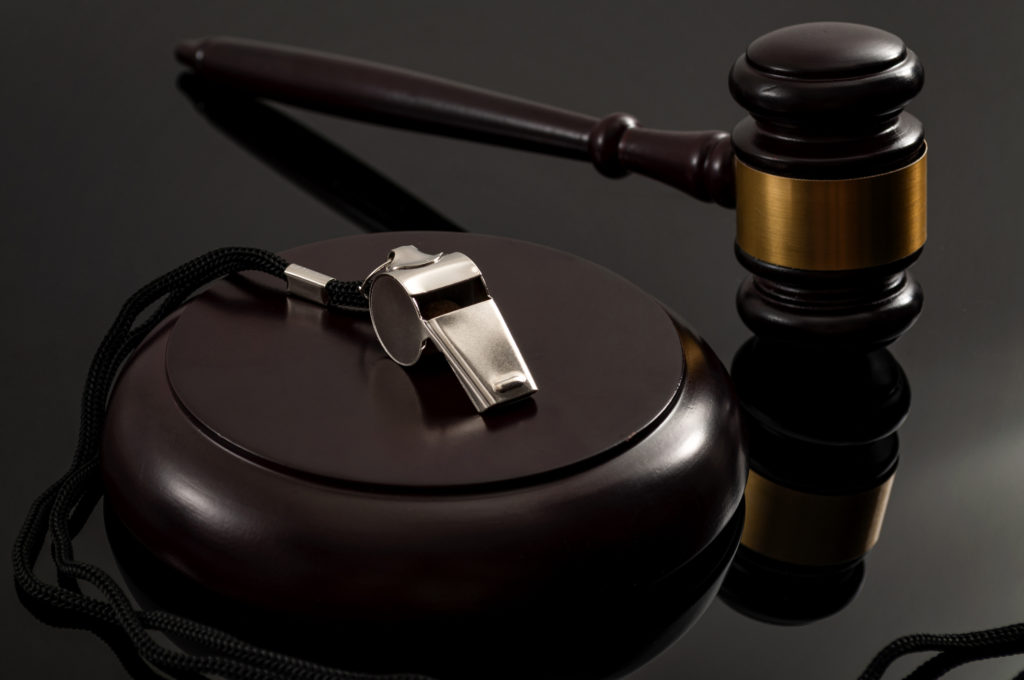A steady rise in corporate whistleblower retaliation cases has occurred in recent years and a crucial element in winning these lawsuits centers on what evidence the employee can marshal to prove their claims. Typically the employer holds most of the cards in terms of access to documents and information related to the underlying facts in a whistleblower retaliation dispute. But various types of evidence are also available to employees and below is a summary of three central types of documents that corporate whistleblowers should review carefully as early as possible in their case and/or seek to get during the discovery process in litigation.
Although the documents and information discussed below should be available to most employees, it is important not to access or take documents from an employer that may contain trade secrets, personal information about other employees, client lists, or otherwise proprietary/confidential information. Consult with an employment lawyer if you have questions about which documents may be considered “off limits.”
#1 Written Internal Complaint To Establish Whistleblowing Activity
To be clear, the various laws protecting whistleblowers from retaliation, such as the Sarbanes-Oxley Act (SOX), do not require employees to file a written, internal complaint to the company about potentially unlawful conduct. If, however, a written internal complaint exists, this document can help make a corporate whistleblower retaliation case even stronger. Note that whistleblower retaliation claims under certain statutes, such as the Dodd-Frank Act, require the employee to externally report their complaint to the U.S. Securities and Exchange Committee (SEC), meaning that submitting an internal complaint solely to the company is insufficient to establish a retaliation claim. Digital Realty Trust, Inc. v. Somers, 138 S. Ct. 767 (2018).
To establish a retaliation claim, a corporate whistleblower must generally show:
- they engaged in protected activity (that is, complained about potentially unlawful conduct);
- the employer knew they engaged in the protected activity;
- they suffered an adverse employment action; and
- the protected activity was a “contributing factor” in the adverse employment action
See 18 U.S.C § 1514A(a)(1)(C) and 49 U.S.C. § 42121(b)(2)(B). A stronger case exists to prove the second element, that the employer knew about the complaint/protected activity, if a copy of the written complain exists. Otherwise, the employer may claim that the whistleblower’s verbal complaint did not happen, was vague, and/or did not sufficiently identify potential violations of SOX or related corporate whistleblower retaliation laws.
#2 Job Performance Evaluations To Combat Employer’s “Same Action” Defense
If an employee establishes the four elements of whistleblower retaliation listed above, then the burden shifts to the employer to prove by “clear and convincing” evidence that it would have taken the same adverse action against the employee even if they had not blown the whistle. Often, a company will assert it needed to take action against the whistleblower (for example, termination, suspension, reduced pay, etc.) because of their alleged poor job performance.
 Luckily, many companies provide employees with an annual job performance evaluation in which they rate or describe the employee’s work and results. These appraisals can be extremely valuable evidence for a whistleblower to undercut the employer’s “same action” defense claiming sub-par job performance. If recent positive job performance review(s) exist, this helps to discredit the company’s explanation and demonstrates that the claim of poor performance is instead an after-the-fact pretext for unlawful whistleblower retaliation. Similarly, any awards or bonuses given to the employee by the company serve as a potent retort to claims of inadequate job performance.
Luckily, many companies provide employees with an annual job performance evaluation in which they rate or describe the employee’s work and results. These appraisals can be extremely valuable evidence for a whistleblower to undercut the employer’s “same action” defense claiming sub-par job performance. If recent positive job performance review(s) exist, this helps to discredit the company’s explanation and demonstrates that the claim of poor performance is instead an after-the-fact pretext for unlawful whistleblower retaliation. Similarly, any awards or bonuses given to the employee by the company serve as a potent retort to claims of inadequate job performance.
#3 Emails, Texts, And Slack Messages To Demonstrate The Company’s Retaliatory Intent
It is not necessary to prove a retaliatory motive to win a whistleblower retaliation case. But it does help. And one of the most ubiquitous—and powerful—pieces of evidence related to retaliatory intent are contemporaneous emails (or texts and other types of messaging).
Often emails and texts exist regarding (i) the company’s response to and knowledge of the employee’s whistleblowing activities; (ii) particular projects or alleged job performance problems the company will rely on to prove its “same action” defense; and (iii) discussion about the underlying potential unlawful conduct that the whistleblower reported which can help demonstrate the legitimacy of the whistleblower’s complaint.
 Perhaps more than any other form of evidence in these cases, the wide-ranging use of email and texts can cause its users to “let their guard down” and occasionally say things in email that reveal their true mindset/intent, which is indispensable in corporate whistleblower retaliation cases.
Perhaps more than any other form of evidence in these cases, the wide-ranging use of email and texts can cause its users to “let their guard down” and occasionally say things in email that reveal their true mindset/intent, which is indispensable in corporate whistleblower retaliation cases.
During discovery in a whistleblower retaliation case, whether it is in court or before an administrative agency, a much broader range of documents and information will be exchanged. But corporate whistleblowers should have access to the above three categories of documents at a relatively early stage in the dispute, which should allow for a better and timely assessment regarding the potential strength of the case.
If you have experienced employment discrimination or whistleblower retaliation, call a top rated employment attorney at (202) 769-1681, or start your preliminary consultation online.
